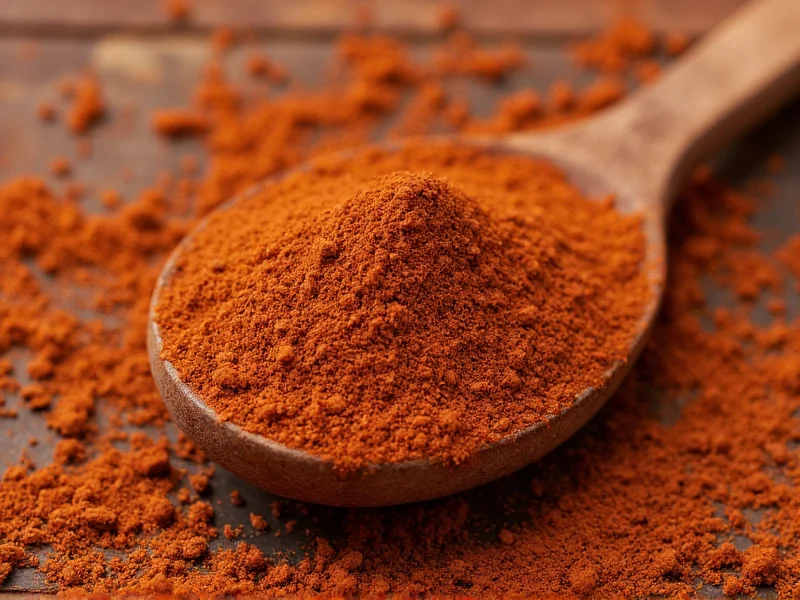Understanding file spice is crucial for anyone seeking to create authentic Louisiana-style gumbo. This unique ingredient has been used for centuries by the Choctaw people and later incorporated into Creole and Cajun cooking traditions. File powder serves both as a thickener and flavor enhancer, making it an indispensable component in traditional gumbo preparation.
What Exactly Is File Powder?
File powder consists of finely ground dried sassafras leaves (Sassafras albidum). The leaves are harvested, dried completely, and then pulverized into a fine powder. This process preserves the natural mucilage in the leaves, which gives file its distinctive thickening properties. The name "file" comes from the Choctaw word "komma file," meaning sassafras.
Unlike other thickeners, file powder adds both texture and flavor to gumbo. It imparts a subtle earthiness with hints of root beer, thyme, and citrus that complements the other ingredients without overpowering them. This dual functionality makes it irreplaceable in traditional gumbo recipes.
File Powder vs. Other Gumbo Thickeners
Gumbo traditionally uses three possible thickeners: roux, okra, and file powder. Each creates a different texture and flavor profile:
| Thickener | Flavor Profile | Texture | When to Add |
|---|---|---|---|
| Roux | Nutty, toasty | Smooth, rich base | Beginning of cooking |
| Okra | Grassy, vegetal | Slimy when raw, tender when cooked | Middle of cooking |
| File powder | Earthy, root beer notes | Velvety, slightly viscous | At serving time |
The Proper Technique for Using File Powder
Using file powder correctly is critical for achieving the desired texture in your gumbo. The most common mistake home cooks make is adding file powder too early in the cooking process. File contains natural mucilage that breaks down when boiled, resulting in a stringy, unpleasant texture.
Follow these steps for perfect file incorporation:
- Prepare your gumbo using your preferred base (roux, okra, or both)
- Cook the gumbo completely without file powder
- Remove the pot from heat
- Sprinkle file powder directly into individual bowls just before serving
- Stir gently to incorporate (about 1/4 to 1/2 teaspoon per bowl)
Alternatively, some traditionalists prefer to pass a small bowl of file powder at the table, allowing each person to add their preferred amount. This method respects the varying preferences among gumbo enthusiasts.
Where to Find and Store File Powder
Authentic file powder can be found in several places:
- Specialty food stores (particularly in regions with Creole or Cajun influences)
- Online retailers specializing in Southern or Louisiana ingredients
- Some larger supermarkets with well-stocked spice sections
- Local farmers' markets in regions where sassafras grows
When purchasing file powder, look for products labeled as pure sassafras file with no additives. Quality file powder should have a vibrant green color and fresh, earthy aroma. Avoid products that appear brownish or have a musty smell, as these indicate age or improper storage.
Store file powder in an airtight container away from light and heat. Properly stored, it maintains its flavor and thickening properties for 6-12 months. For extended shelf life, consider keeping it in the freezer.
File Powder Substitutes and Alternatives
While nothing perfectly replicates file powder's unique combination of flavor and thickening properties, several alternatives exist when file is unavailable:
- Okra - Provides similar thickening but with a different flavor profile
- Arrowroot powder - Thickens well but lacks file's distinctive flavor
- Cornstarch - Effective thickener but alters flavor slightly
- Extra roux - Changes the gumbo's color and flavor profile significantly
When substituting, remember that file powder serves dual purposes in gumbo. If using a neutral thickener like arrowroot or cornstarch, consider adding a small amount of dried thyme or a drop of root beer extract to approximate file's flavor profile.
The Cultural Significance of File in Gumbo
File powder represents one of gumbo's three thickening traditions, each with cultural significance. While roux reflects French influence and okra represents African culinary traditions, file powder connects gumbo to its Native American roots through the Choctaw people.
In traditional Louisiana cooking, gumbo thickened with file is often called "gumbo filé" to distinguish it from roux-based or okra-based versions. Some families and regions have strong preferences for one thickener over others, making this a point of culinary identity.
The proper use of file powder remains a point of pride among gumbo connoisseurs. Many traditionalists consider the addition of file powder at the table an essential part of the gumbo experience, connecting modern preparation to centuries-old practices.
Common File Powder Questions Answered
Understanding these key points will help you use file powder effectively in your gumbo recipes:
- File powder should never be boiled - always add it after removing from heat
- Start with 1/4 teaspoon per serving and adjust to preference
- File powder contains safrole, a compound that's been restricted in commercial sassafras products, but traditional culinary use in gumbo remains safe in normal quantities
- Authentic file powder comes only from sassafras leaves, not roots or bark
- File powder works best in seafood and chicken gumbos, though some traditionalists use it in all varieties











 浙公网安备
33010002000092号
浙公网安备
33010002000092号 浙B2-20120091-4
浙B2-20120091-4